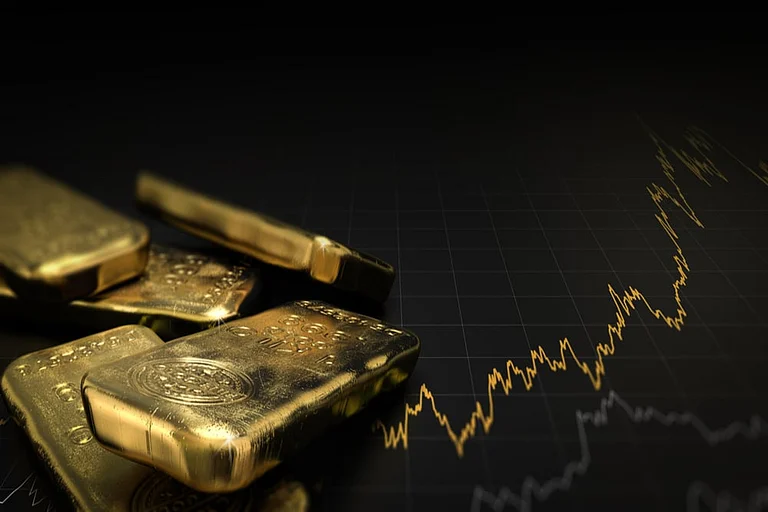In 2024, the price of gold reached $3000 per ounce. This primarily happened due to concerns like a slowdown in the US and a rising fiscal deficit. At the same time, Indian markets also witnessed a long phase of correction after peaking in September 2024, igniting people’s interest in gold to diversify their portfolios. However, before you allocate a portion of your portfolio to gold, it’s important to have a look at its historical performance, inherent risks and its significant role in long-term investing.
Investing In Gold: What Makes the Yellow Metal Endure
Gold price: If you calculate the returns of gold's price growth in last 100 years, it counts to a total return of 14,328% or an annualised CAGR of 4.85%.
Let’s start by looking at Gold's 100-Year Journey
Gold prices went up from $20.68 per ounce in 1920 to about $3,000 now. Indeed, that’s an impressive journey, right?
If you calculate the returns of this price growth, it counts to a total return of 14,328% or an annualised CAGR of 4.85%.
Gold’s Performance Since 1971
The US abandoned the gold standard in 1971. This event led to a series of dramatic changes that caused the price to increase over time. Since then, it’s delivered a return of 8.42% in USD. Like equity, it has not been a smooth ride; there have been a lot of fluctuations. Only that gold moves up when the stock market plummets doesn’t mean gold is risk-free.
History shows it can go through some tough stretches, too. Between 1980 and 2000, gold lost about 61.3% of its worth over 20 years. That’s the longest bearish stretch for the fold. In addition to the above, there have also been sharper, shorter drops, like a 36.9% decline in just a year and a half. If we pay attention to the long-term data, then we see:
1970s: Soared by a staggering +1359%
1980s: Dropped -22%
1990s: Fell another -28%
2000s: Bounced back with a +293% gain
Back in the 1980s, many investors jumped into investing in gold. But why? Because they were expecting a repeat of the 1970s boom, only to be hit by two decades of poor returns. Ironically, investors who were disappointed by the slow phase did not wait to witness the huge rise of the 2000s. This is called recency bias, which means giving too much importance to what happened recently. It may sound brutal, but it’s the truth: due to recency bias, people tend to make wrong investment decisions.
In the early '80s, many investors jumped in, expecting a repeat of the 1970s boom—only to be hit by two decades of poor returns. This teaches us an important investing lesson: Don’t chase returns. Instead, follow a steady plan where you keep adjusting your investments regularly.
Gold Returns in INR vs. USD
If you compare gold returns in Indian Rupees (INR) and U.S. Dollars (USD), you’ll notice a big difference, especially after 1991.
Before 1990, India controlled its exchange rate rigidly. So, gold gave similar returns whether you looked at it in INR or USD.
After 1991, India opened up its economy, and the rupee started moving more freely against the dollar. Since then, the rupee has slowly lost value (depreciated) compared to the dollar. This means gold prices in INR kept going up, even when prices in USD didn’t move much.
Between 1990 and 2002, gold returns in USD were often negative over five years. But in INR, gold usually gave positive returns.
Here’s a fun fact: Gold has had two losing decades in USD—but in INR, gold has never had a losing decade. This shows how your local currency can affect your returns.
Why Gold Endures: The Lindy Effect
Gold has been valued by civilizations for over 5,000 years, and its staying power is no coincidence. This longevity is a classic example of the Lindy Effect—the idea that the longer something has survived, the longer it’s likely to keep surviving.
Gold’s long history tells two stories. On one hand, it’s a trusted store of value that has stood the test of time. On the other, it’s an asset that can be unpredictable—capable of steep declines and long recovery periods. For Indian investors, the rupee’s gradual depreciation has made gold even more appealing, offering a layer of stability that’s often missing in global comparisons.
Through wars, financial crises, and rapid technological shifts, gold has remained a trusted store of value. Even though it doesn’t produce income like stocks or bonds, its resilience makes it a reliable hedge against systemic risks that can upend traditional investments.
Strategic Benefits of Gold in Your Portfolio
Adding gold to a well-diversified portfolio can bring some real strategic advantages:
Lower Risk: Gold tends to move differently from stocks. Because of this low correlation, including gold can smooth out your portfolio’s ups and downs.
Smarter Rebalancing: If you periodically shift between gold and equities—selling what’s high and buying what’s low—you naturally take advantage of market swings without needing to time the market.
Crisis Cushion: When markets fall or global tensions rise, gold often holds its value—or even rises—offering a layer of protection when other assets stumble.
A balanced portfolio—such as an annual rebalanced 50:50 Gold and Nifty 50 combination—has historically outperformed standalone investments in either asset, highlighting the practical application of the Lindy Effect.
Final Thought
Gold’s long history tells two stories. On one hand, it’s a trusted store of value that has stood the test of time. On the other, it’s an asset that can be unpredictable—capable of steep declines and long recovery periods. For Indian investors, the rupee’s gradual depreciation has made gold even more appealing, offering a layer of stability that’s often missing in global comparisons.

The author is Cofounder & Executive Director, Prime Wealth Finserv Pvt. Ltd.
(Disclaimer: Views expressed are the author’s own, and Outlook Money does not necessarily subscribe to them. Outlook Money shall not be responsible for any damage caused to any person/organisation directly or indirectly.)


